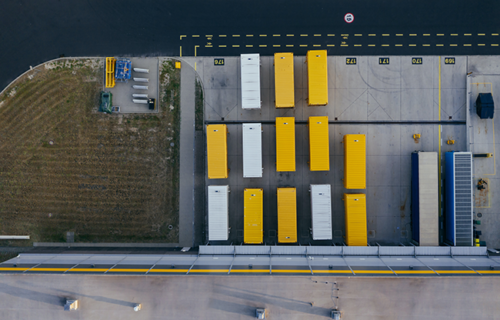The German logistics real estate market is stable – this is the conclusion reached by the consulting company Logivest after evaluating its own research data. With a volume of almost 2.6 million square meters, the new building developments in the first half of the year are in the range of the average of the last five years. The basis of the data is always the time of the start of construction.
The clear winner in the first half of the year is the Dresden/Chemnitz logistics region with around 190,000 square meters of new construction space. Named the 24th top logistics region by the Fraunhofer Institute last year, the region is already in the top three in the surveys by the consulting firm Logivest, which specializes in logistics real estate and locations. Large-volume developments in Hainichen and a new VW logistics hall in Meerane, in which the carmaker wants to bundle components of the MEB mobile electrical construction kit, form the basis for this placement.
“After Leipzig and Magdeburg, Dresden is now showing the relevance of the East German regions for the logistics market. The location in the middle of Europe, ideal connections and good space availability at moderate prices also increase the attractiveness of the areas for international companies,” says Kuno Neumeier, CEO of the Logivest Group.
Not surprisingly, the top logistics regions of Duisburg/Lower Rhine and the Bay of Cologne once again occupy the top spots with around 360,000 and 197,000 square meters of new construction space respectively. The largest project development in the first half of the year is also located in the Duisburg/Lower Rhine region. BEOS Logistics is building an approximately 85,000 square meter logistics center for the logistics service provider Rhenus in the Rhein-Lippe port in Wesel.
Very positive developments can also be seen in Koblenz (around 115,000 square meters) and Würzburg/Schweinfurt (around 150,000 square meters). Both regions, so far positioned in the lower field, will convince in 2022 with several large-volume project developments. Dietz AG is building a 55,000 square meter logistics property for Wacker Neuson in Mühlheim-Kärlich, northwest of Koblenz, and a 25,000 square meter hall for a beverage manufacturer in Burgbrohl, also northwest of the Rhineland-Palatinate city.
In the Schweinfurt/Würzburg region, a 76,000 square meter fashion logistics center is being built for S.Oliver and in Gerolzhofen the groundbreaking ceremony for a 37,000 square meter property for Norma.
In contrast to the up-and-coming regions, however, a certain reticence is already noticeable in the established markets such as Hamburg, Munich or Stuttgart. The first projects were postponed until next year, and new plans for the second half of the year are only being tackled with hesitation, if at all.
“The demand for logistics space is consistently high – buffer storage, new production sites – the industry is driven by the global situation. In addition, e-commerce and e-mobility require an enormous amount of space. On the other hand, there is a shortage of building materials and increasing uncertainty in terms of energy supply,” says Kuno Neumeier, CEO of the Logivest Group.
For the second half of the year, the logistics real estate expert is therefore anticipating stagnation or even a slight decline in new construction compared to the previous year, with a total of around 5.4 million square meters of new construction space. “The hardly calculable construction costs and the global uncertainty will also be reflected in the logistics real estate market”.
But there are also positive developments such as the emergence of new production sites and an initial trend towards nearshoring. In Sülzetal near Magdeburg, the chip manufacturer Intel is expected to build a plant with 10,000 jobs from 2023. And in July 2022, the VW Group will start the “SaltGiga Mission”. Behind this lies the development of the worldwide battery center with the group’s first cell factory at the Salzgitter site.
